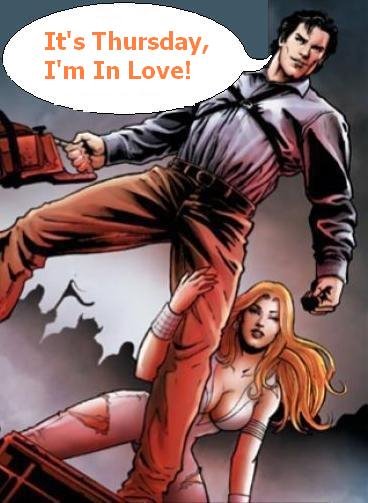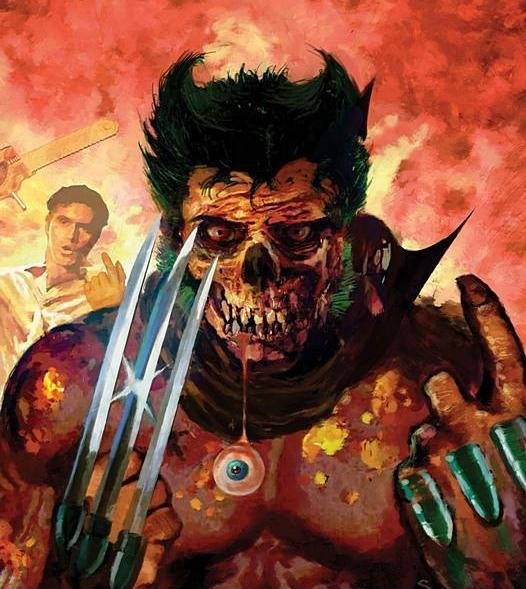Wizard Universe has this report:
REMEMBERING MIKE WIERINGO
As the comics world mourns the artist’s passing, revisit the exemplary cover work he’s done for Wizard over the years
By Brian Warmoth | Posted August 14, 2007 11:50 AM |
Mike Wieringo, one of comics’ masters of energetic compositions and smiles, passed away Sunday due to heart failure, the artist’s brother has confirmed on Wieringo’s website. He was 44.
Wieringo came up into the comic book industry alongside his friend and collaborator, writer Mark Waid, on The Flash in 1993. The pair also united for a celebrated run on Fantastic Four in 2002 that almost saw them released prematurely before fans lobbied Marvel to have them retained.
In addition to many other stories and covers, Wieringo also launched his creator-owned series Tellos through Image Comics with writer and co-creator Todd DeZago. Wieringo recently posted new artwork on his blog indicating that he was working on new material for the book.
Wieringo’s cheerful and approachable demeanor was well known throughout the industry among his peers and fans, reflecting the same charisma and exuberance he injected into his comics work.
He became a popular choice among comics publishers and Wizard as a go-to artist for covers and interiors over the years, in addition to contributing his expertise to “How to Draw” features.
“Primarily Mike was extremely easy to work with and a consummate professional,” said Wizard Executive Editor Brian Cunningham. “He would come up with a dozen sketches and ideas on how to approach the cover image.”

WIZARD #72b
“He’d done a bunch of different sketches, but the one we chose was laid out so well because it put Spider-Man front and center and popped off the background,” said Cunningham. “Wieringo inked this one himself, as opposed to Richard Case, who was his regular inker at that time.
“He was willing to work with you,” Cunningham remembered. “If something wasn’t working, Mike was willing to come back with more sketches, and he tried new things with each round of sketches. Mike was the perfect partner.”
“He’d done a bunch of different sketches, but the one we chose was laid out so well because it put Spider-Man front and center and popped off the background,” said Cunningham. “Wieringo inked this one himself, as opposed to Richard Case, who was his regular inker at that time.
“He was willing to work with you,” Cunningham remembered. “If something wasn’t working, Mike was willing to come back with more sketches, and he tried new things with each round of sketches. Mike was the perfect partner.”

WIZARD #84b
“The original idea was that Spider-Man be looking at a billboard with mug shots that represent other Spider-Man visuals, because Spider-Man would be looking off toward the billboard,” said Cunningham. “We had Mike do a special mug shot for this. That was Spider-Ham, which was an old favorite for us.” Wieringo recently drew Spider-Ham again in Ultimate Civil War Spider-Ham #1.
“The original idea was that Spider-Man be looking at a billboard with mug shots that represent other Spider-Man visuals, because Spider-Man would be looking off toward the billboard,” said Cunningham. “We had Mike do a special mug shot for this. That was Spider-Ham, which was an old favorite for us.” Wieringo recently drew Spider-Ham again in Ultimate Civil War Spider-Ham #1.

WIZARD #86b
“We wanted a Hulk that was too big for the confines of the covers,” explained Cunningham. Wieringo drew the fractured logo on a separate piece of artwork, and his eye for scale and animated flair popped right off the page.
“We wanted a Hulk that was too big for the confines of the covers,” explained Cunningham. Wieringo drew the fractured logo on a separate piece of artwork, and his eye for scale and animated flair popped right off the page.

WIZARD #132b
“It’s always a challenge to try and fit more than two to three characters on a cover and try to fit cover copy,” remarked Cunningham. “We had started adding cover copy with issue #101. Before then we just had blurbs on a polybag.
“With the FF cover, Mike managed to cram four characters on to the cover and still make it work,” Cunningham said.
Additionally, the cover marked a unique endeavor into creative procedure. “That FF cover was inked by Karl Kesel [who was Wieringo’s regular inker], and Karl was explaining to me a new inking process,” Cunningham stated. “He would have Mike scan in his pencil art as a TIFF, and then send the file to Karl. Karl would adjust the pencil-art file in Photoshop so that he could print that cover in 11-by-17 on his printer. He’d print the pencil art in blue, and Mike was able to keep his original pencils. Seeing that work was fascinating.”
“It’s always a challenge to try and fit more than two to three characters on a cover and try to fit cover copy,” remarked Cunningham. “We had started adding cover copy with issue #101. Before then we just had blurbs on a polybag.
“With the FF cover, Mike managed to cram four characters on to the cover and still make it work,” Cunningham said.
Additionally, the cover marked a unique endeavor into creative procedure. “That FF cover was inked by Karl Kesel [who was Wieringo’s regular inker], and Karl was explaining to me a new inking process,” Cunningham stated. “He would have Mike scan in his pencil art as a TIFF, and then send the file to Karl. Karl would adjust the pencil-art file in Photoshop so that he could print that cover in 11-by-17 on his printer. He’d print the pencil art in blue, and Mike was able to keep his original pencils. Seeing that work was fascinating.”
I think moreso now than ever, I'm going to get that Tellos Omnibus.




No comments:
Post a Comment